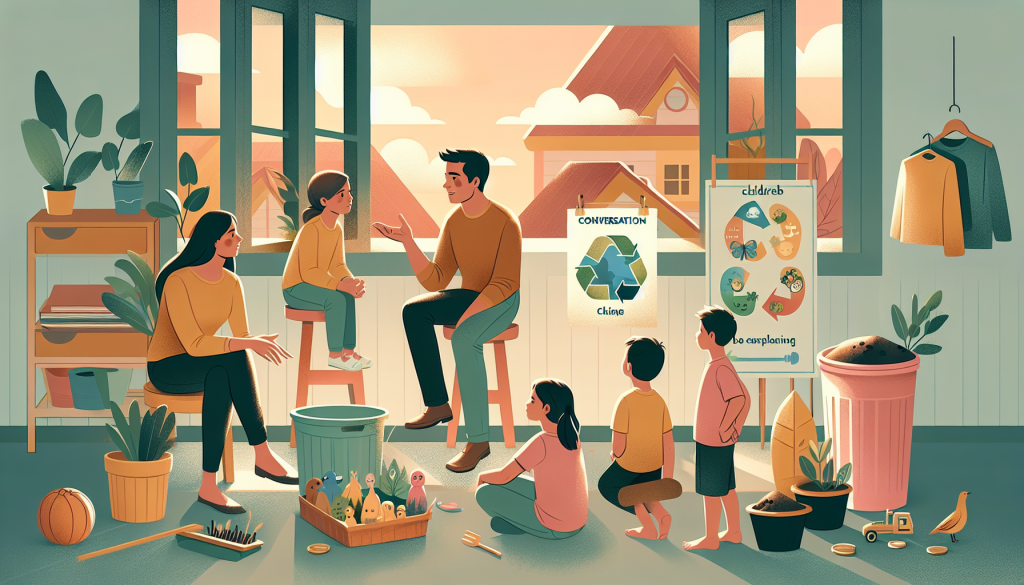“`html
How to Talk to Your Child About Climate Change
Introduction: Why Talking About Climate Change Matters
As parents, we strive to prepare our children for the world they will inherit. One of the most pressing issues of our time is climate change, and it’s crucial to help children understand it in a way that empowers them rather than overwhelms them. Talking about climate change with your child isn’t just about facts; it’s about fostering hope, responsibility, and a sense of agency. But how do you approach such a complex and sometimes frightening topic?
In this article, we’ll explore how you can have meaningful and age-appropriate conversations with your child about climate change. From discussing the science to addressing their emotional responses, and even inspiring action, this guide will provide practical parenting advice to help you build a strong foundation for environmental education.
Main Points: Understanding the Key Ideas
1. Tailor the Conversation to Your Child’s Age
Children process information differently depending on their developmental stage. Here’s how you can adapt your approach:
- Young children (ages 3-7): Focus on simple concepts like taking care of the Earth. Use examples they can relate to, such as recycling or planting trees, and emphasize positive actions rather than negative consequences.
- Older children (ages 8-12): Introduce more detailed explanations about climate change, including causes and effects. Encourage curiosity by answering their questions and exploring topics like renewable energy or endangered species.
- Teenagers: Engage in deeper discussions about the science and societal impacts of climate change. Encourage critical thinking and explore ways they can contribute to solutions, such as advocacy or sustainable living practices.
2. Address Emotional Responses
Children, like adults, may feel a range of emotions when learning about climate change, including fear, sadness, or even guilt. As a parent, it’s important to validate their feelings while helping them process these emotions in a healthy way.
Using principles of cognitive-behavioral therapy (CBT), you can help your child identify and challenge catastrophic thoughts. For instance, if they express fear that the Earth is doomed, reassure them by focusing on the positive changes people are making to combat climate change. Highlight stories of hope and resilience to inspire optimism.
3. Foster a Sense of Agency
A key psychological need for children is the sense of autonomy—the belief that their actions can make a difference. Empower your child by involving them in small, meaningful actions that contribute to environmental protection. This could include:
- Starting a backyard composting project.
- Participating in local clean-up events.
- Choosing eco-friendly alternatives when shopping together.
These activities not only teach responsibility but also provide a hands-on way to make a positive impact.
4. Be Honest but Hopeful
While it’s important to be truthful about the challenges of climate change, avoid overwhelming your child with doom and gloom. Strike a balance by emphasizing solutions and progress. For example, share stories about advances in renewable energy or successful conservation efforts.
Children need to know that while the problem is serious, there are people and organizations working tirelessly to address it. This approach helps fulfill their psychological need for safety and stability.
Practical Recommendations for Parents
Here are some actionable tips to improve your conversations about climate change:
1. Normalize Conversations About the Environment
Make discussions about the environment a natural part of your family’s daily life. For instance, you could talk about the weather, wildlife, or sustainable habits during meals or on family outings. Use everyday experiences to spark curiosity and learning.
2. Leverage Books and Media
There are plenty of age-appropriate books, documentaries, and online resources that explain climate change in engaging ways. For example, younger children might enjoy picture books about nature, while older kids could explore educational videos or interactive websites.
Make sure to review content beforehand to ensure it aligns with your message and values.
3. Encourage Questions
Children are naturally curious, so create an open environment where they feel comfortable asking questions. If you don’t know the answer, research it together. This not only models critical thinking but also strengthens your bond with your child.
4. Lead by Example
Children often learn more from what we do than what we say. Demonstrate your commitment to environmental sustainability by adopting green habits, such as reducing waste, conserving energy, or supporting eco-friendly initiatives. When your child sees you taking action, they are more likely to follow suit.
5. Join a Community
Connecting with like-minded families or environmental groups can reinforce your child’s sense of belonging and purpose. Look for local organizations or events that involve children in environmental activities, such as tree planting or climate marches.
Conclusion: Empowering Your Child for a Better Future
Talking to your child about climate change is an essential step in preparing them for the future. By tailoring your approach to their age, addressing their emotions, and fostering a sense of agency, you can turn a potentially overwhelming topic into an opportunity for growth and empowerment.
Remember, the goal isn’t to burden your child with the weight of the world but to inspire them to be part of the solution. With love, patience, and the right tools, you can nurture their curiosity, resilience, and hope for a better tomorrow.
For more parenting advice and resources on environmental education, explore the articles on our website. Together, we can help the next generation create a sustainable and thriving planet.
“`

